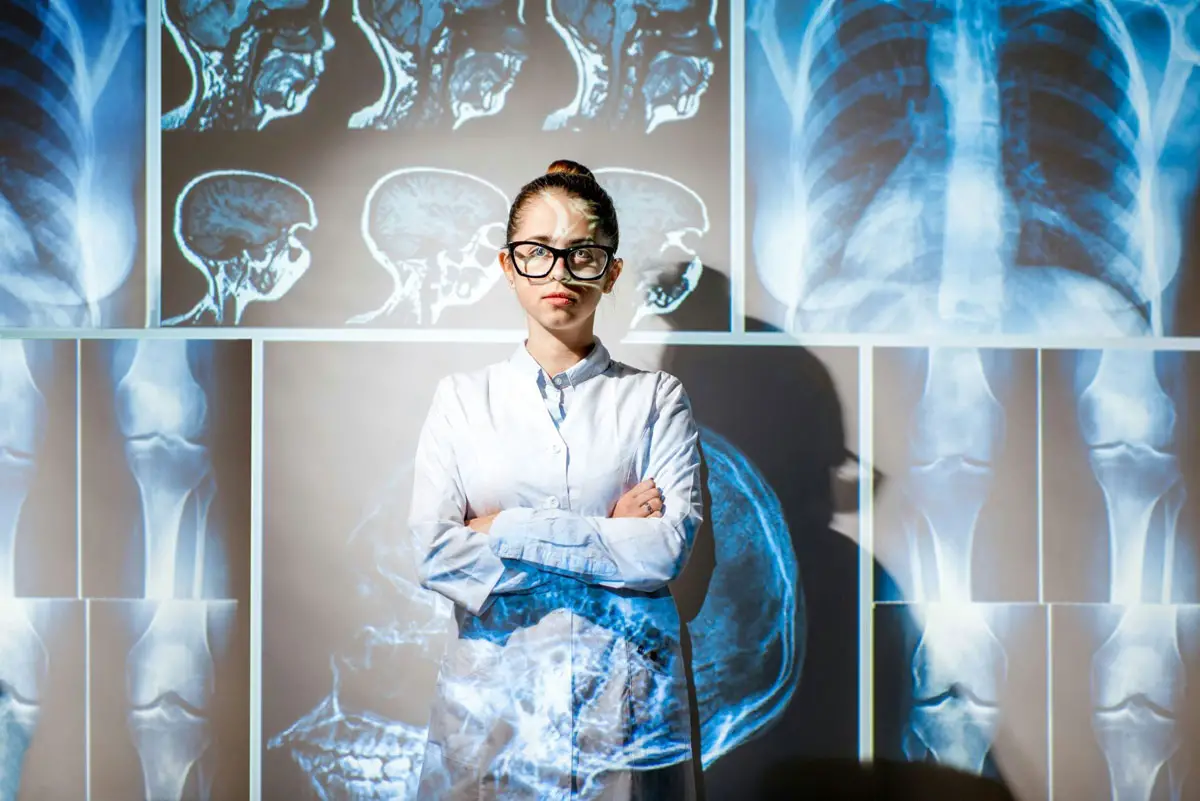Advancements in Medical Imaging and What They Mean for Patients: Transforming Modern Healthcare

Medical imaging has come a long way, transforming the way we diagnose and treat countless conditions. From X-rays to MRIs, these technologies help doctors see inside the human body with incredible precision. But recent advancements are taking this field to a whole new level, offering faster, clearer, and more accurate results that directly benefit patients.
As innovations like AI-powered imaging and 3D technology emerge, they’re not just improving diagnostics—they’re reshaping patient care. These breakthroughs mean earlier detection of diseases, less invasive procedures, and personalised treatment plans.
For patients, this progress isn’t just about better tools; it’s about hope, faster recoveries, and improved outcomes. Let’s explore how these cutting-edge technologies are changing the face of modern medicine and what it means for all of us.
The Evolution of Medical Imaging Technology
Medical imaging has undergone significant transformations, evolving from rudimentary techniques to advanced, high-resolution systems. This evolution has revolutionized diagnostic accuracy and patient outcomes.
Early Imaging Techniques
The introduction of X-rays in 1895 marked the beginning of medical imaging. Early systems relied on these low-quality, monochromatic images to visualize bones and masses. In the mid-20th century, ultrasound emerged, enabling real-time visualization of soft tissues, improving prenatal care and cardiovascular assessments. By the 1970s, computed tomography (CT) scans offered detailed cross-sectional images, transforming complex diagnoses, such as tumours and internal injuries. However, each method initially had limitations in resolution and accessibility, which stimulated innovation.
The Rise of Digital Imaging
Digital imaging reshaped the landscape in the late 20th century. MRI technology advanced with high-definition imaging and precise anatomical detail, becoming a cornerstone for neurological and musculoskeletal diagnostics. Innovations like Picture Archiving and Communication Systems (PACS) enabled seamless storage and retrieval of digital scans, simplifying workflows and enhancing accessibility for radiologists. In recent years, AI algorithms in MRI review have further bolstered diagnostic precision, identifying anomalies that could be missed by humans. These advancements continue to elevate patient care through efficient, data-driven approaches.
Recent Advancements in Medical Imaging
Recent developments in medical imaging technologies have revolutionized diagnostic precision and patient care. Innovations such as AI integration, 3D imaging, and hybrid modalities address clinical challenges, offering enhanced accuracy and efficiency, like inogen one g4 accessories is doing with the oxygen supplies.
Artificial Intelligence and Machine Learning
AI and machine learning have elevated medical imaging by streamlining image analysis and improving diagnostic accuracy. AI algorithms, especially in MRI review processes, can identify abnormalities and patterns that may be overlooked by human radiologists. By processing vast quantities of data, these technologies reduce diagnosis times and enhance early detection of conditions such as tumors or cardiovascular diseases. Machine learning improves imaging modalities by refining image clarity and aiding in predictive analytics. For instance, tailored algorithms assist clinicians in monitoring disease progression and guiding treatment decisions, ensuring timely and effective patient care.
3D and 4D Imaging Techniques
3D and 4D imaging techniques enhance our understanding of complex anatomical structures. While 3D imaging creates detailed static images of organs and tissues, 4D imaging adds a temporal dimension, enabling real-time visualization of dynamic processes like cardiac activity or foetal movements. These advancements are critical in surgical planning, allowing healthcare providers to simulate procedures and improve precision. For example, 3D imaging supports creating patient-specific implants, while 4D imaging offers unparalleled insights into functional disorders. The integration of these technologies results in less invasive diagnostic procedures and personalised treatment plans for patients.
Hybrid Imaging Modalities
Hybrid imaging modalities combine two or more technologies to enhance diagnostic capabilities. PET-CT and SPECT-MRI pair functional imaging with high-resolution anatomical detail, making them valuable in detecting and staging cancers, neurological disorders, and cardiovascular conditions. These systems improve accuracy by providing comprehensive data in a single scan instead of relying on separate imaging sessions. Hybrid techniques also reduce patient exposure to radiation through optimized protocols. By merging complementary imaging data, hybrid modalities facilitate precise diagnostics and foster innovative research into disease mechanisms, ultimately improving patient care outcomes.
How These Advancements Benefit Patients
Advancements in medical imaging significantly improve patient outcomes by enhancing diagnostic precision, enabling less invasive treatments, and delivering quicker results. These innovations redefine the patient experience and elevate the standard of care.
Improved Diagnosis Accuracy
Technological breakthroughs like AI-powered imaging improve diagnostic accuracy by identifying minute abnormalities in scans during MRI reviews and other analyses. High-resolution imaging methods, such as 3D and 4D technologies, provide detailed visualizations of organs and tissues. These advancements enable healthcare providers to detect diseases, like cancers or cardiovascular issues, at earlier stages. Hybrid imaging modalities, including PET-CT and SPECT-MRI, combine detailed anatomical and functional imaging to provide comprehensive diagnostic insights while minimising errors.
Minimally Invasive Procedures
Enhanced imaging precision supports minimally invasive treatments, reducing trauma and recovery times for patients. For example, interventional radiology uses real-time imaging to guide procedures like biopsies or ablations, avoiding the need for open surgery. 3D imaging assists in planning surgeries with better accuracy, decreasing complications. These advancements minimise patient discomfort and accelerate post-procedure recovery.
Faster and More Accessible Results
Digital imaging technologies streamline workflows, enabling quicker diagnostics and ensuring that patients receive timely care. MRI review tools and AI algorithms automate the analysis of imaging studies, reducing the time required for diagnosis. Picture Archiving and Communication Systems (PACS) facilitate immediate sharing of images between healthcare providers, improving collaboration. These systems ensure patients have faster access to accurate results, particularly in urgent cases or underserved areas.
Challenges and Ethical Considerations
Advancements in medical imaging bring transformative benefits, but they also introduce significant challenges and ethical considerations. Addressing these issues ensures that the technology evolves responsibly while prioritizing patient welfare.
Cost and Accessibility Issues
Modern medical imaging technologies are often expensive, limiting their accessibility in low-resource settings. Advanced systems like high-resolution MRIs or hybrid modalities require significant upfront investment, maintenance costs, and skilled personnel, which can strain healthcare budgets. Patients in underserved or rural areas often face delays in accessing these essential diagnostic tools, creating disparities in healthcare delivery.
Emerging imaging innovations, like AI-powered analysis, add further costs, as they depend on advanced computational infrastructure and specialised expertise. While these technologies increase efficiency, the financial burden may restrict adoption for smaller healthcare facilities. Ensuring equitable access to imaging advancements necessitates collaboration between policymakers, healthcare providers, and technology developers.
Patient Privacy and Data Security
High-resolution imaging and AI-powered tools, especially those used in MRI review processes, generate vast amounts of patient data. Protecting this sensitive information from breaches and unauthorized access is critical. Centralized data storage systems, while efficient for remote access and analysis, are vulnerable to cyberattacks, which can compromise patient trust.
The integration of AI into imaging workflows requires robust protocols to anonymize patient information, ensuring compliance with regulations like HIPAA. Transparent communication about data usage, security measures, and patient consent is essential in fostering trust. A proactive focus on cybersecurity, coupled with strict adherence to privacy laws, helps safeguard patient data without hindering technological advancements.
The Future of Medical Imaging
According to the Radiological Society of North America medical imaging continues to evolve, with groundbreaking technologies transforming how we diagnose and treat patients. Ongoing advancements promise to reshape patient care by enhancing precision and accessibility.
Emerging Technologies on the Horizon
Innovative technologies are redefining imaging capabilities. AI algorithms now play a pivotal role in scan analysis, automating tasks like MRI reviews to improve diagnostic accuracy and reduce human error. Quantum computing holds potential for processing vast imaging datasets at unprecedented speeds, accelerating diagnoses in real time. Portable imaging devices are also gaining traction, enabling immediate diagnostics in remote or emergency settings.
Hybrid imaging systems are combining modalities, such as PET-MRI, to deliver detailed anatomical and functional insights. Additionally, advancements in molecular imaging are enabling real-time visualization of cellular processes, paving the way for earlier disease detection. These technological innovations are creating unprecedented opportunities to refine medical imaging and expand its applications.
Potential Impact on Patient Care
Emerging imaging technologies promise to significantly improve patient care. Earlier disease detection and more precise imaging support proactive treatments, leading to better outcomes for conditions like cancer and cardiovascular diseases.
Minimally invasive techniques benefit from high-resolution imaging, reducing the need for traditional surgeries and shortening recovery times. Portable imaging technologies provide timely diagnostics in underserved areas, ensuring equitable healthcare access. By integrating faster and more accurate imaging tools into medical workflows, we enhance care efficiency while prioritising patient comfort and safety.










